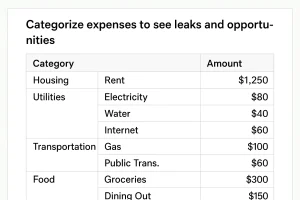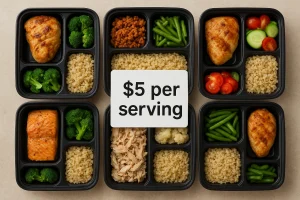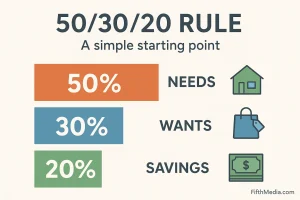Preventive health doesn’t have to be expensive or complicated. For families in the United States, focusing on affordable preventive steps can lead to lower medical bills, fewer emergency visits, and a healthier, happier lifestyle.
The best part? You don’t need pricey programs or boutique wellness apps to get started. With a few smart habits, families can protect their health and their budget in 2025.
Why Preventive Health Matters for Families
Think of preventive health as investing in your future. A little effort today can prevent big costs tomorrow. According to the CDC, chronic diseases like diabetes and heart disease are among the most expensive — but also the most preventable — conditions in the U.S.
By focusing on simple routines like healthy eating, exercise, stress management, and regular checkups, families can avoid unnecessary medical bills and live better day to day.
Affordable Nutrition Habits
Food choices have the biggest impact on long-term health — and also on your wallet. Many families assume eating healthy means buying expensive organic brands or superfoods, but that’s not the case.
Buy seasonal and local. Produce like apples, carrots, cabbage, and sweet potatoes are affordable in the fall and winter. Seasonal shopping reduces costs and increases freshness.
Meal plan to reduce waste. Planning meals cuts down on impulse purchases and keeps food costs low. Families can save hundreds annually by reducing food waste. (See “10 Cheap & Healthy Meals to Cook at Home in 2025” for budget-friendly recipes.)
Bulk staples, big savings. Rice, beans, lentils, oats, and frozen vegetables are budget lifesavers. Use them as the base of family meals.
Preventive Checkups That Don’t Break the Bank
Skipping regular doctor visits may feel like saving money, but it often leads to bigger bills later. Preventive checkups are usually covered at no cost by most U.S. insurance plans.
-
Annual physicals keep tabs on overall health.
-
Pediatric visits are essential for growth and vaccinations.
-
Screenings like blood pressure, cholesterol, and diabetes checks catch issues early.
(For guidance on choosing the right coverage, see “Affordable Health Insurance Choices for American Families in 2025.”)
Exercise Without a Gym Membership
Movement is medicine — but you don’t need a monthly gym fee.
Walk together. Daily 30-minute family walks improve mood, lower risk of obesity, and cost nothing.
Try at-home workouts. Use bodyweight moves (squats, push-ups, planks) or free YouTube fitness videos. A printable weekly calendar makes it easier to stay consistent.
Affordable gear. Resistance bands or a jump rope cost less than $20 but add variety to workouts.
Stress Management on a Budget
Mental health is just as important as physical health. Stress takes a toll on family life, but managing it doesn’t require expensive therapy apps.
-
Practice deep breathing — it’s free and effective.
-
Use free meditation apps like Insight Timer.
-
Schedule family downtime with game nights, shared meals, and tech-free evenings.
Smart Preventive Tech at Home
Affordable technology can support preventive care without costly subscriptions.
-
Fitness trackers under $50 can track steps and heart rate.
-
Smart scales help monitor weight and body composition.
-
Air quality monitors are helpful for families with asthma or allergies.
(For more options, check “Best Budget Tech Gadgets Under $50 for Everyday Americans.”)
Community and Social Wellness
Preventive health isn’t just personal — it’s community-driven. Families thrive when they’re connected.
-
Attend local health fairs for free screenings.
-
Explore community centers offering affordable fitness programs.
-
Volunteer together — giving back lowers stress and builds purpose.
25+ Frequently Asked Questions
-
Are preventive checkups free with insurance?
Yes, under the Affordable Care Act, most preventive visits are covered without extra cost. -
What’s the cheapest healthy protein?
Beans, lentils, and eggs are affordable, nutrient-rich protein options. -
Do families really save money by meal planning?
Absolutely. Studies show households save up to $1,500 annually. -
How much exercise do kids need?
The CDC recommends at least 60 minutes daily. -
Are generic vitamins safe?
Yes, if verified by third-party testing (USP or NSF labels). -
What are free stress relief methods?Breathing exercises, walking, journaling, and free meditation apps.
-
Can preventive health reduce ER visits?Yes. Regular checkups catch issues before they escalate.
-
What are low-cost heart-healthy foods?Oats, beans, leafy greens, and frozen berries.
-
How often should adults get a physical?Once per year is recommended.Are there government resources for preventive care? Yes, programs like Medicaid and CHIP cover preventive services.
-
What’s a budget-friendly breakfast idea?
-
Overnight oats with fruit and nuts. Is walking as good as running?
-
Yes — consistent walking provides strong heart benefits.
-
How can families manage screen time stress-free?
-
Set tech-free zones (like dinner time).
-
What’s the cheapest source of calcium?
-
Milk, yogurt, and canned sardines.
-
Do schools provide preventive screenings?
-
Many offer vision, hearing, and BMI checks.
-
How much water should kids drink?
-
Roughly 6–8 cups daily, depending on age.
-
Are community clinics reliable?
-
Yes, federally qualified health centers provide quality low-cost care.
-
What’s the best cheap fitness gear?
-
Resistance bands, yoga mats, and jump ropes.
-
How do you prevent flu affordably?
-
Flu shots are free under most insurance.
-
Can mental health be preventive?
-
Yes — therapy, mindfulness, and stress
-
management prevent burnout.
-
Do families need annual dental visits?
Yes, preventive dental care saves money on fillings and root canals. -
How do we eat healthy on SNAP benefits?
Focus on beans, rice, eggs, frozen veggies, and oats. -
Is preventive care useful for seniors at home?
Yes, screenings and fall-prevention save costs long term. -
What’s the most affordable exercise?
Walking, bodyweight workouts, and stair climbing. -
Do employers offer preventive perks?
Many provide wellness programs, gym discounts, or free screenings.
Conclusion: Healthy Families, Healthy Budgets
Preventive health doesn’t mean spending more — it means spending smarter. By choosing affordable nutrition, scheduling routine checkups, staying active, managing stress, and using budget-friendly tech, U.S. families can thrive without breaking the bank.
Looking for more resources? Check related guides like “Step-by-Step Budgeting Tips for Beginners in the U.S.” and “Best Budget Tech Gadgets Under $50 for Everyday Americans (2025)” for more family-friendly strategies.





